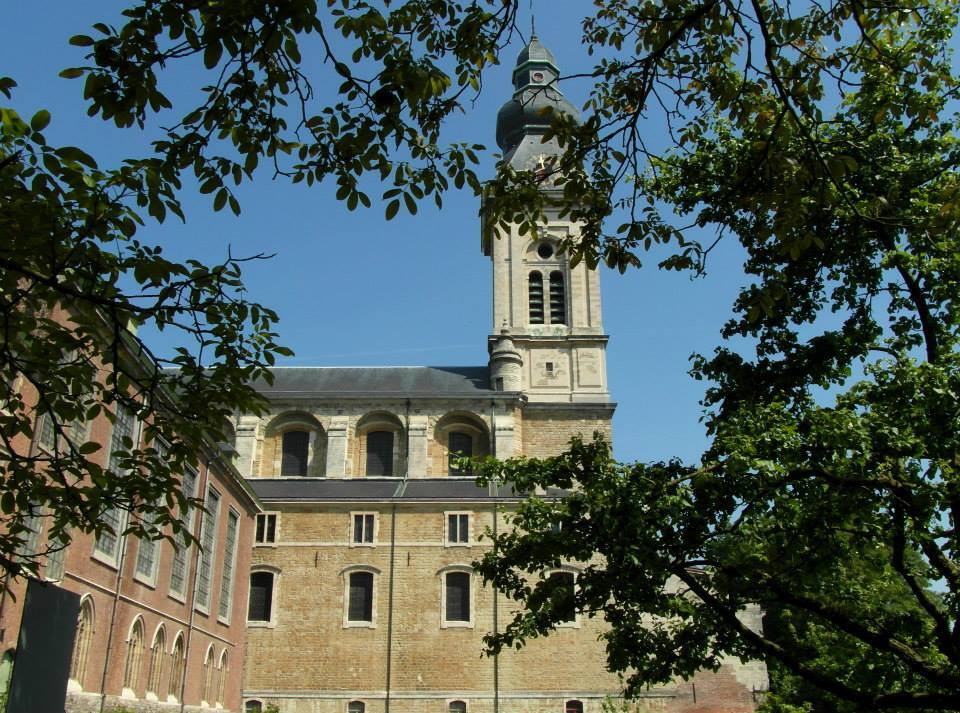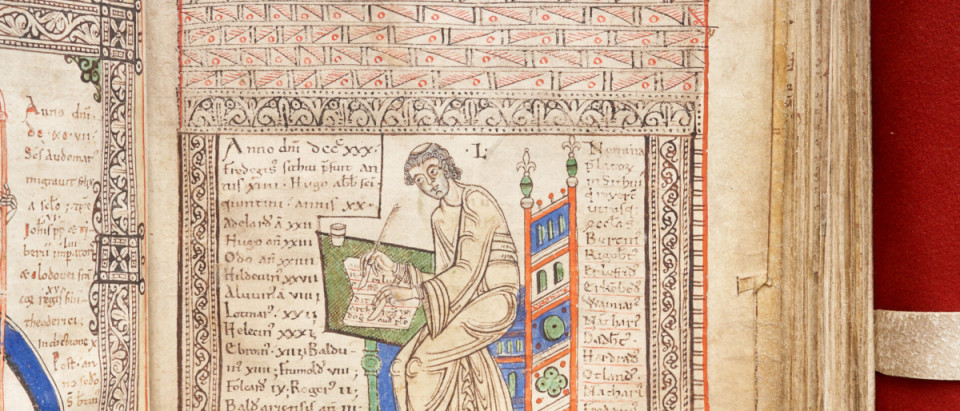Manuscripts
The Boekentoren holds more than six thousand manuscripts, from precious illuminated manuscripts from the Middle Ages to single-edition typescripts from the twentieth century. Almost two thousand manuscripts can be consulted online.
With the launch of mmmonk.be, a digital platform, we provide access to 820 Medieval manuscripts from the abbey of Sint-Baafs, Sint-Pieters (Ghent), Ten Duinen (Koksijde) and Ter Doest (Lissewege). The project, a joint venture with de Openbare Bibliotheek Brugge, Grootseminarie Ten Duinen Brugge and bisdom Gent, brings collections from around the globe together in one virtual library. This digital platform is an absolute scoop and offers both professionals and the public a chance to admire these manuscripts online.
From an encyclopedia to humanistic and ancient texts
From the start of their existence in the early Middle Ages these four abbeys collected texts and books. In the scriptoria of the abbey, monks spend hours copying. With the help of an extensive network in Europe the abbeys aquired different manuscripts and books. In the 15th century there are some keen bibliophile abbots that also play a part in broadening these collections. Abbot Filips I Conrault of de Sint-Pietersabdij (1444-1471), abbott Jan Crabbe of Ten Duinen (1457-1488), abbot Hendrik Keddekin of Ter Doest (1478-1491), and abbot Raphaël de Mercatellis of de Sint-Baafsabdij (1478-1508) are well known as benefactors and patrons of the arts.
The manuscripts found on mmmonk.be date from the 6th to the 16th century. They are not only religious texts, but cover a wide range of philosophical, theological, legal and medical works, scientific studies and texts by humanistic and classical authors. The abbeys were not only the centre of the spiritual life, but also of study. Their extensive and versatile collections and libraries played a huge part in the knowledge creation at that time.
The books and manuscripts are unique and therefore they are preserved according to very strict rules. Studying these manuscripts can only happen at the library itself, with proper motivation and permission. Mmmonk makes sure that this unique collection can be viewed by scientists, students and enthusiasts.

View at the garden of the Sint-Pietersabdij Gent
Monastic heritage at the Boekentoren
The story of this collection starts at the confiscations of abbey and other libraries during the French Revolution.
The monastic collections of the Sint-Pieters and Sint-Baafs abbey are both rich and unique. During the Ancient Régime, these abbeys were the greatest and most powerful abbeys of the county of Flanders. They played a crucial part in the economic development of the region and in the dissemination of knowledge.
No less than 32 pieces from the collection have been recognized as a 'topstuk'.

MMMonk Liber Floridus
IIIF: a digital innovation
To take a look at the MMMonk manuscripts, we worked with IIIF, International Image Interoperability Framework. A digital innovative system for safekeeping and exchanging digitalised images.
IIIF functions with ‘manifests’ written in a computerscript. Such a manifest contains not only the imagebevat naast het beeld ook alle metadata (vb. datering, locatie, onderwerp,…). Met mmmonk.be willen de projectpartners niet alleen innovatief onderzoek op de monastieke manuscripten stimuleren, maar ook de erfgoedsector informeren over toepassingen van beelduitwisseling, en erfgoedorganisaties aanmoedigen om IIIF in te zetten.
IIF laat toe dat de gedigitaliseerde documenten in een context kunnen worden gepresenteerd, zoals in dit geval rond een thema, samen met erfgoed dat in andere instellingen wordt bewaard. Iets wat niet alleen de bibliotheekmedewerker kan, maar ook de gebruikers toelaat om zelf de data te exploreren, contexten te bouwen, te annoteren,…
Mmmonk inspires
Mmmonk is more than research material. These magnificent manuscripts function as an inspiration for young artists. Inspired by the texts, decorations, miniatures and initials, some artists made a modernistic interpretation of the collection. You can admire their work at the Boekentoren in 2023.
Young kids on the other hand look with awe at the manuscripts, the flowers and animals drawn at the side, de adorned initials and miniatures. Bibliotheek Brugge prepared some teaching materials that you, as a teacher, can use.